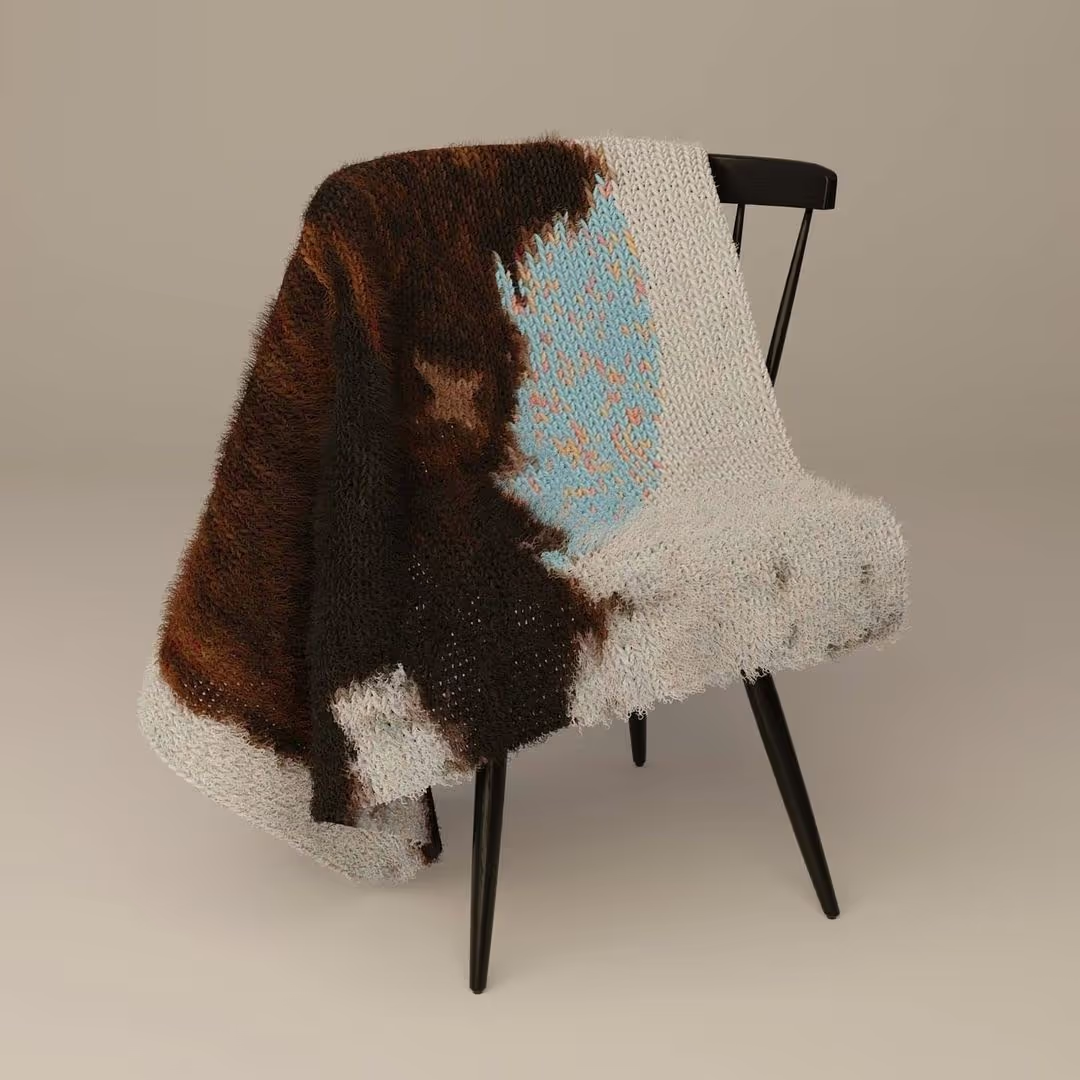
As unpredictable as the world was in 2020, the annual world-wide challenge, Nodevember, still went strong this year. Nodevember gives 3D artists a chance to showcase and improve their work using proceduralist techniques. This year, we wanted to interview Blender procedural expert, Erin Woodford, better known online as Erindale to his thousands of followers online. We chose to speak with Erin because of his welcoming and open approach to proceduralism. Erin is a revolutionary freelance 3D modeling entrepreneur who runs a highly engaged Youtube channel where he posts proceduralism tutorials using the popular 3D creation software, Blender. In this article, Erin leads us through his start in the 3D world, his thoughts on why proceduralism is important, and his journey to being an entrepreneur in the 3D space.
If you want to listen to the entire interview with Erindale, check out our podcast episode: Nodevember procedural magic with Erindale.xyz.
Although it seems like Blender has become an industry norm, just a few years ago Blender wasn’t considered software that many CG artists used for professional projects. But with the domination of the video game development market in the CG industry, alongside the sheer volume of new users every year, many more professionals are turning to Blender to make their designs come to life.

Erin started his 3D modeling journey around his early teenage years with Pro/DESKTOP, a now-discontinued CAD tool, but then advanced to Blender version 2.49 because he was inspired to make video games.
As he got older, he then went to university to major in computer animation visualization but he wasn’t sure of that path at the time, so he ventured out of the 3D modeling world for a few years to train as a cabinet maker.
Through his exploration, he found a love for interior design, especially the portion of the job where it came time to create the visuals for each project. Instead of resorting to the usual tools that most interior designers use, he returned to Blender to create stunning and realistic interior design visuals.
During his final year at interior design school, he started to have a strong interest in computational design, particularly how computers can be a design partner instead of simply being a tool for 3D software design, taking advantage of a computer’s deductive reasoning.
This strong interest in computational design was led by his desire to create more abstract and experimental schemes that would better show off his creativity as a designer in school. This drive to push the limit with his design led him to procedural art.
While the majority of people stay away from proceduralism because they assume it is math-heavy design, Erin said that no special math skills or mentality are needed to do procedural art. Erin said that procedural systems only require basic math skills and that once you know how to manipulate the values and what they stand for, procedural designing becomes second nature, especially on Blender’s interface.

For 3D designers who are heavily art-minded, Erin suggests Substance 3D Designer as a happy medium between proceduralism and art-based design. As an example of the difference between Substance and Blender, when you want something to be mirrored, in Substance you can make the artistic choice at any time. As opposed to in Blender, where if you want something mirrored you need to think about it ahead of time to put it first in the nodes.
Another tip that Erin has for designers who do not use proceduralism but would like to is to simply explore the procedural systems that already come with their program of choice, the procedural community online would be able to help anyone who may come across a bump in the road during their journey.
However, one thing that all aspiring 3D proceduralists must keep in mind is that proceduralism is great for work that is wholly made from scratch, so those who like using replication in their art will have a hard time doing so in their scenes.
The “made from scratch” aspect of 3D procedural art especially took a toll on Erin’s work/life balance during Nodevember where he was challenged to create a new shader every day during the month of Nodevember. During the Nodevember challenge, Erin created an Art Deco pattern creator tool that his community can access for free.
Erin admits that his work/life balance was happily skewed towards work, even going as far as to turn down paid work to focus on completing the challenge successfully. Erin wanted to leverage Nodevember to build his online audience further and keep producing useful content that future generations of aspiring proceduralists could look to when they’re stuck on their projects.
Erin’s ultimate goal with his career in 3D modeling is not to become extremely rich, but rather simply support himself while doing the thing he loves the most, procedural 3D modeling on Blender. He’s currently looking to improve his current business model to one that can help him focus consistently on creating helpful content for the people in the proceduralist community at any stage.
Although not all of his income comes from his online educational work yet, Erin currently makes some of his income through a few different avenues online:
While building his online brand based on using Blender, Erin has also kept his cost of living low and acknowledges the lack of pressure to be a provider for a family. These key factors have allowed Erin to take on the risk of monetizing his passion for procedural 3D modeling. Instead of dealing with all of the nuances that come with client work, he would rather provide educational content at his own discretion.
Erin believes current 3D designers should give procedural 3D modeling a try because it will save them time once they know how to use the system properly. He says that instead of looking for the right asset time and time again, proceduralists can just create what they need when they need it. He stresses that proceduralism is powerful and that the barrier of entry is diminishing year after year.
Nodevember 2020 challenges thousands of 3D artists online to learn new proceduralist techniques. With so many people having more time to learn new 3D approaches because of the pandemic, Erin’s inviting approach to proceduralism gave thousands this year the encouragement they needed to get ahead of the curve in the 3D world. He urges everyone to give proceduralism a try regardless of the platform they currently use. Having created a substantial amount of resources already for the 3D community, Erin continues to make helpful content that teaches proceduralism in an approachable way. Proceduralism is undoubtedly the future of the CG industry, and Erin is pioneering the path for many artists around the world.